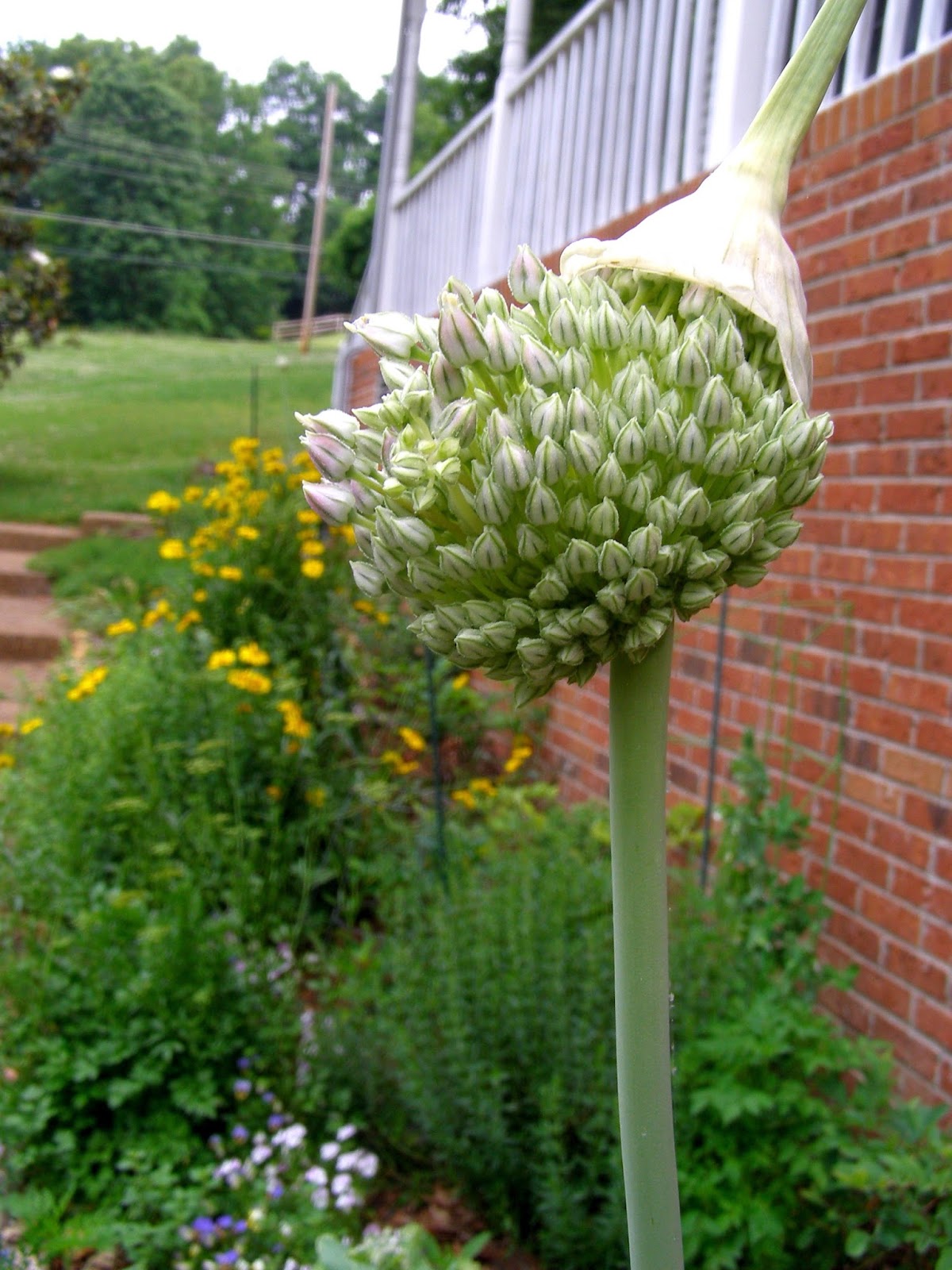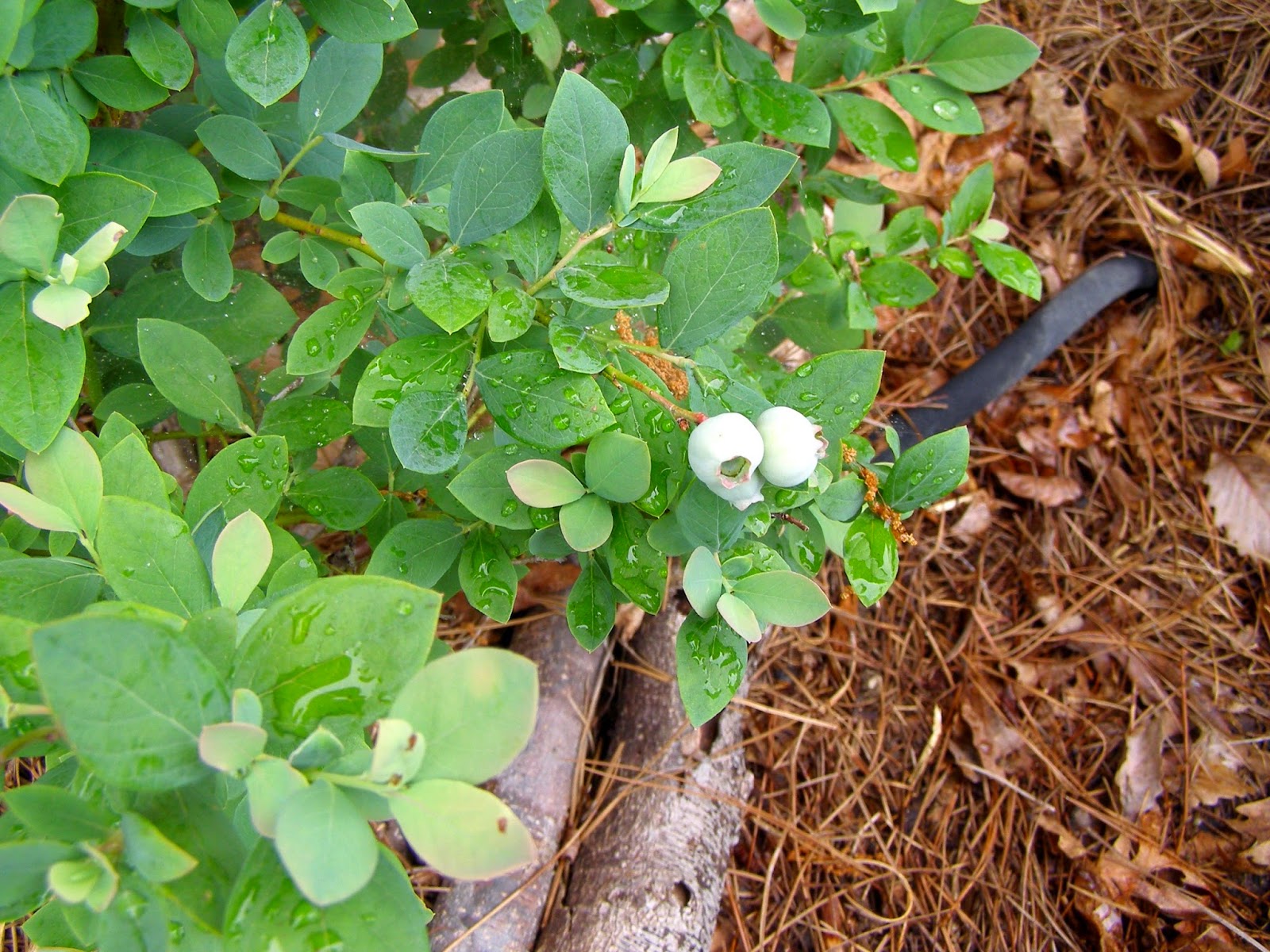We returned from vacation to find our first beautiful eggplant. Usually, I like to make Eggplant Parmesan with a fresh tomato sauce, but all the growing tomatoes are green and I've used up last summer's frozen tomatoes. But my pantry always has a jar or can of organic whole tomatoes, and I have plenty of fresh basil, so dinner is on.
Roasting canned tomatoes is a great way to bring out their flavor, so that's my plan for the sauce. You can use a jarred sauce for this if you want (and I use plenty of that for pizza and such), but your eggplant will thank you if the sauce is fresh....and it's really easy.
First, preheat your oven to 350F. Then, find a pan in which the tomatoes will fit snugly, but not be on top of each other. A 9" square/round pan is usually great, and most people have these in the kitchen. Add a touch of olive oil, chop an onion, add a dash of red pepper flakes, and pop it in the oven for 10 minutes or so. You want the onion to soften, but not brown.
While the onion is roasting, drain (and save!) the juice from your can of tomatoes. We'll add this back in later, but we want the tomatoes to roast, not stew. I actually had a half tomato from the garden so I chopped that into large chunks. Grab a few cloves of garlic and peel them. If they're large, split them down the middle. You can also see some shallot I found that needed to be used.
When the onions start to soften (as you can see, mine were not quite translucent yet), add in the drained tomatoes, garlic, shallot. I added a splash of olive oil, salt, and pepper and stirred it up. Now it goes into the oven for 30-40 minutes to slow-roast.

While that's roasting, it's time to work on the eggplant, which needs to be sliced thinly (maybe 1/4" slices). You can see two tins: one has some seasoned breadcrumbs, and the other has a beaten egg with a little water added to stretch it. Dip the eggplant slices in egg wash, then in the bread crumbs, and put them on a cookie sheet. Roast them at 350F for 5 minutes, then flip and roast for another 5 minutes.
I found this no-fry technique for eggplant here a few years ago, and I
strongly prefer it to frying the eggplant in a skillet. It stays crisper, is healthier, and I don't have to have both the stove
and oven going in a Tennessee July. I don't make eggplant parm in the winter....eggplant is a SUMMER vegetable and the flavor is far superior when it's fresh.
Also, when I pick eggplant fresh, I almost never find that it's bitter, or that the skin is tough, and I never have to salt it ahead of time. Word to the wise: TASTE a piece of the raw eggplant to be sure! In fact, taste everything as you go. You'll learn a lot about how flavors develop.
Above, you can see the tomatoes after about 35 minutes in the oven. They smell divine.
Next, roughly tear the basil leaves, and mix them + the reserved tomato juice all in with the roasted tomatoes. This is then set aside to cool a little while we finish roasting the eggplant slices. (Taste it.)
Once the sauce cools a little, dump it all into the blender and let 'er rip. Then, (of course) taste the sauce and see if it needs salt or pepper. This is also basically how I make my fresh tomato sauce (minus the roasting of the tomato). With roasted or fresh tomatoes, it is unlikely you will need any sugar. Sauce made this way will look a little pinker than jarred sauce, and it should taste really fresh.
Now, at this point, you can (1) set everything aside and assemble the dish shortly before you eat, (2) assemble the dish and store it in the fridge to bake later, or (3) assemble and bake now. If you put it in the fridge, I recommend putting it in a cold oven so it can warm as the oven preheats.
Assembly: put some tomato sauce in the bottom of your dish. Layer in the eggplant slices. Top with grated mozzarella and grated parmesan. Then start over, until your dish is full.
Here's the dish, ready for the oven. Bake at 350F for 30-45 minutes until browned and bubbly. (So, check it at 30 and see how it looks, but know that it won't need more than 45 to cook thoroughly.)
Here's the finished dish, ready for dinner! I've set up a "glory shot" here, with the homemade bread in the background. Three out of four family members rated this dish a "10," and we picked up some more eggplant at the local Farmer's Market to enjoy the bounty of the season!
Buy seasonally. Cook simply. Eat well!












